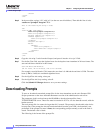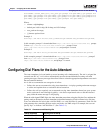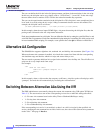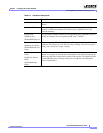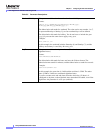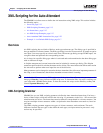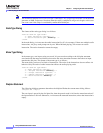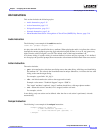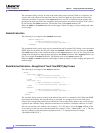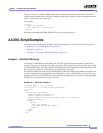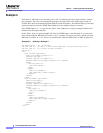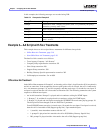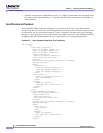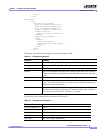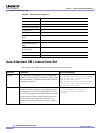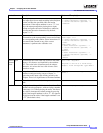
5-16
Linksys SPA9000 Administrator Guide
Document Version 3.01
Chapter 5 Configuring the LVS Auto-Attendant
XML Scripting for the Auto-Attendant
The <noinput> dialog can only be used in the menu dialog and is optional. When it is specified, AA
executes the audio and action instructions if the user does not input any digits with the value of the
<timeout> parameter, in seconds. If the repeat attribute is set to T, AA plays the menu prompt after
playing the prompt specified in the <noinput> dialog and ignores the action instruction. If the value is
F, AA executes the action instruction. The default value of the repeat attribute is F.
Either the audio or the action instruction can be empty. If both are empty, AA does nothing and waits
for user input.
Nomatch Instruction
The following is an example of the nomatch instruction:
<nomatch repeat=”F”>
<!—audio instruction (optional) -->
<!-- action instruction pair (optional) -->
</nomatch>
The <nomatch> dialog can be used only in a menu dialog and is optional. This dialog is activated when
DMTF digits do not match the dial plan. When the nomatch condition is met, AA executes the audio
and action instructions in the <nomatch> dialog. If the repeat attribute is set to T, AA plays the menu
prompt after playing the no input prompt and ignores the action instruction. If the repeat attribute is set
to F, AA executes the action instruction. The default value of the repeat attribute is F
Either the audio or action instruction can be empty. If both are empty, AA does nothing and ignores all
buffered digits.
Menu Matched Instruction—Recognition of Touch Tone (DMTP) Key Presses
The following is an example of the match instruction:
<match >
<case input= “50xx”/>
<!—audio instruction (optional) -->
<!-- action instruction pair (optional) -->
</case>
<case input= “#”/>
<!—audio instruction (optional) -->
<!-- action instruction pair (optional) -->
</case>
<default>
<!—audio instruction (optional) -->
<!-- action instruction pair (optional) -->
</default>
</match>
The <match> dialog can be used only in the menu dialog and it is a mandatory field. When the DTMF
digits match the dialplan, the <match> dialog is activated. AA compares each <case> dialog and
executes the corresponding audio/action instructions. If AA cannot find a match in any <case> dialogs,
it performs the <default> dialog audio/action instruction if <default> is defined; otherwise, AA ends.
The user can specify exact numbers, (for example 1, 23, 1234 and so on), in the input attribute of the
<case> dialog, or the user can use the dial pattern (for example, “50xx”, “408xxx5061”, “xx.”). The user
can also combine several dial patterns together and use “|” to separate them (for example,
“50xx|408xxx5061|1234”).



